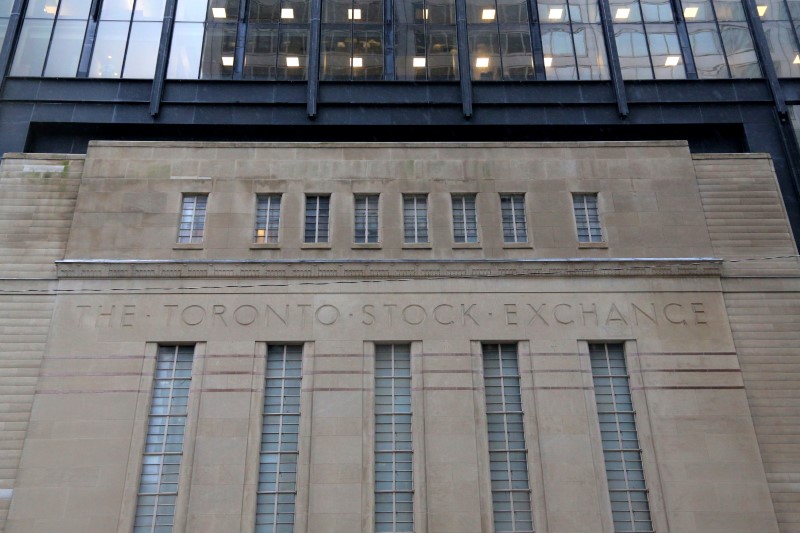Asahi shares mark weekly slide after cyberattack halts production
Investing.com - Canada’s main stock index jumped on Friday, an extension in a multi-day winning streak for the average.
By 4.01 ET, the S&P/TSX 60 index standard futures contract had risen by 22 points, or 1.23%.
The S&P/TSX composite index jumps 1% or 311 points at 30,471.68.
Index finished higher by 0.2% at 30,160.59 on Thursday, logging a fifth consecutive session in the green and surpassing a record high notched on Wednesday.
Underpinning sentiment were hopes that the Federal Reserve will slash interest rates against before the end of the year, which have helped to counterbalance uncertainty around an ongoing U.S. government shutdown that has also delayed the release of key economic data.
Gold prices also remained steady, with the yellow metal hovering around all-time peaks, offering added support to the commodity-heavy TSX index.
U.S. stocks climb
U.S. stock index rose, after tech gains prompted another session of record highs on Wall Street despite heightened uncertainty over an ongoing government shutdown and delayed payrolls data.
The Dow Jones Industrial Average gained 302 points, or 0.7%, the S&P 500 index climbed 0.1%, and the NASDAQ Composite fell 0.3%.
Each of the three major U.S. indexes climbed to record levels on Thursday, with persistent cheer over artificial intelligence supported chipmaking stocks. But overall gains were seen wearing thin as a government shutdown entered a third straight day.
The S&P 500 is up nearly 1.1% week to date, the Dow Jones Industrial Average has added 0.6% and the NASDAQ Composite has climbed 1.6%
Bessent on government shutdown’s impact on the economy
Treasury Secretary Scott Bessent warned in a CNBC interview on Thursday that this shutdown could hurt the economy more than those in the past.
Shutdowns have historically had limited impact on financial markets and the economy. The last shutdown occurred during Trump’s first term, and lasted 35 days between late-2018 and early-2019. The Congressional Budget Office estimated an impact of $11 billion on the economy from the shutdown, which was also the longest in U.S. history.
A cooling U.S. labor market is a "bigger worry" for financial markets than an ongoing U.S. government shutdown, according to analysts at Capital Economics.
Writing in a note to clients, the analysts led by Jonas Goltermann suggested that, historically, a shutdown of the federal government is "unlikely to make much impact" on investors even if "it drags on for some time."
Instead, a softening in the labor picture points to "downside risks" for a range of asset classes, including equities, U.S. Treasury yields and the dollar, they argued.
ISM non-manufacturing PMI data due
A major consequence of the shutdown was the likely postponement of the monthly nonfarm payrolls report, which was initially dut out later today.
The Fed has been keeping close tabs on labor market figures, with policymakers mulling over a potential series of rate reductions to help boost hiring and investment -- albeit at the risk of driving up inflationary pressures.
Thursday’s Challenger layoffs data showed some improvement, with layoffs falling in September, while ADP data showed a substantial decline in private payrolls in September.
Investors will likely only have figures from the Institute for Supply Management gauging activity in the key U.S. services sector to parse through on Friday.
The ISM’s non-manufacturing purchasing managers index for September could provide some insight into the effect of sweeping U.S. tariffs on a segment of the economy that accounts for a major bulk of total output.
The figure is tipped to edge down to 51.8, compared to 52.0 in August. A reading above 50 indicates expansion.
Crude on track for weekly losses
Oil prices moved higher, but were still on track for their steepest weekly fall since late June due to market expectations that the OPEC+ group could hike output further.
Brent futures gained 0.4% to $64.39 a barrel, and U.S. West Texas Intermediate crude futures rose 0.5% to $60.75 per barrel.
Both benchmarks slid nearly 2% to their lowest level since early June in the previous session, and were poised to drop nearly 8% for the week.
Sentiment remains cautious after reports earlier this week suggested that the Organization of Petroleum Exporting Countries and allies, a group known as OPEC+, could increase output by as much as 500,000 barrels per day in November, three times the volume added this month.
Gold steadies
Gold prices were on track to post a seventh straight weekly increase, bolstered by hopes for further Fed interest rate reductions and concerns over the U.S. government shutdown.
Despite the worries that the shutdown will lead to the delay of many crucial economic indicators, markets remain largely persuaded that the Fed will slash interest rates again at its next policy meeting later this month.
Spot gold gained 0.3% to $3,866.29 an ounce, while gold futures for December increased by 0.6% to $3,889.00/oz by 06:58 ET.
Bullion, which tends to perform better in low rate environments, has jumped by roughly 46% over the past one-year period.
